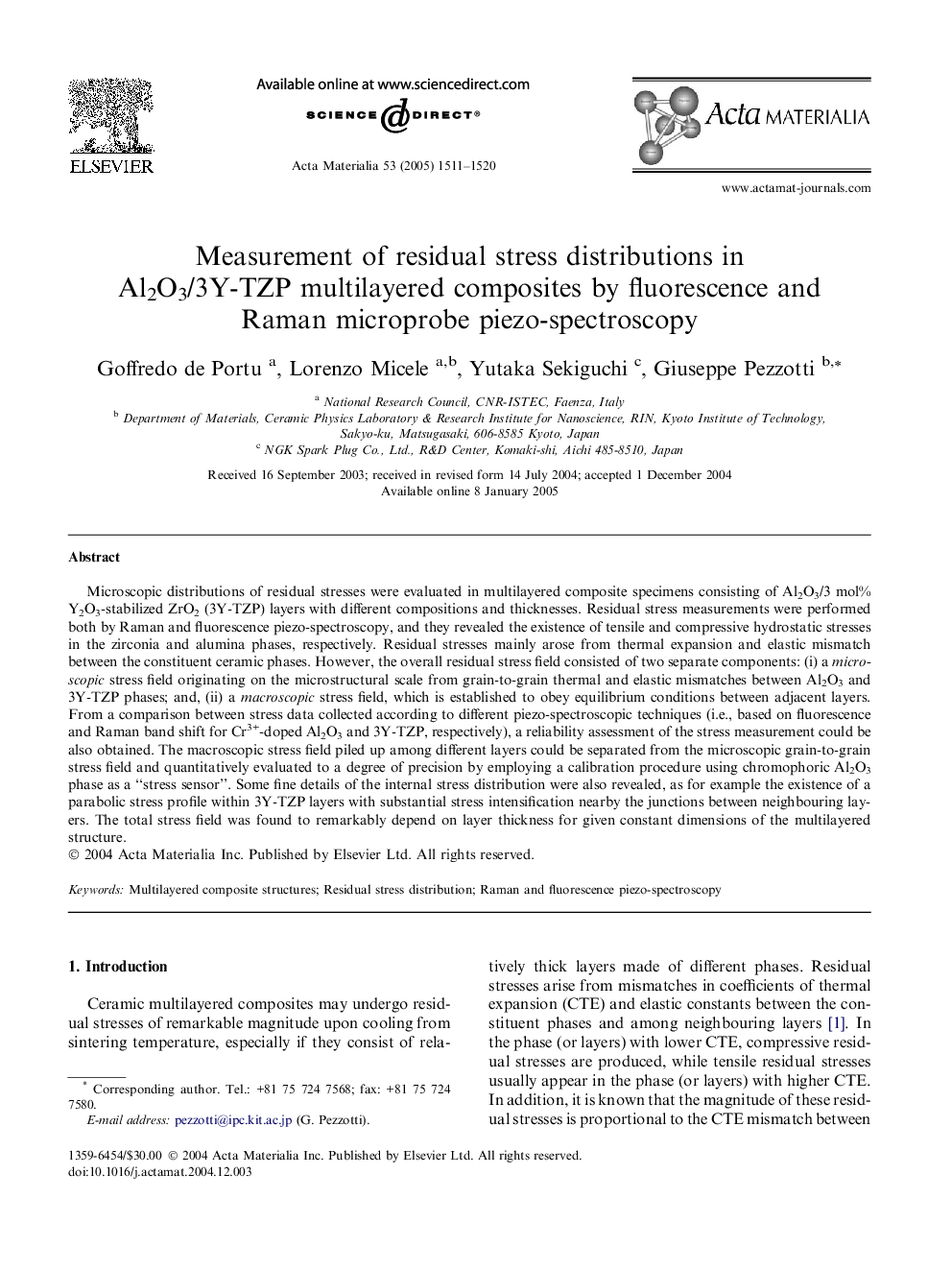| Article ID | Journal | Published Year | Pages | File Type |
|---|---|---|---|---|
| 10621070 | Acta Materialia | 2005 | 10 Pages |
Abstract
Microscopic distributions of residual stresses were evaluated in multilayered composite specimens consisting of Al2O3/3 mol% Y2O3-stabilized ZrO2 (3Y-TZP) layers with different compositions and thicknesses. Residual stress measurements were performed both by Raman and fluorescence piezo-spectroscopy, and they revealed the existence of tensile and compressive hydrostatic stresses in the zirconia and alumina phases, respectively. Residual stresses mainly arose from thermal expansion and elastic mismatch between the constituent ceramic phases. However, the overall residual stress field consisted of two separate components: (i) a microscopic stress field originating on the microstructural scale from grain-to-grain thermal and elastic mismatches between Al2O3 and 3Y-TZP phases; and, (ii) a macroscopic stress field, which is established to obey equilibrium conditions between adjacent layers. From a comparison between stress data collected according to different piezo-spectroscopic techniques (i.e., based on fluorescence and Raman band shift for Cr3+-doped Al2O3 and 3Y-TZP, respectively), a reliability assessment of the stress measurement could be also obtained. The macroscopic stress field piled up among different layers could be separated from the microscopic grain-to-grain stress field and quantitatively evaluated to a degree of precision by employing a calibration procedure using chromophoric Al2O3 phase as a “stress sensor”. Some fine details of the internal stress distribution were also revealed, as for example the existence of a parabolic stress profile within 3Y-TZP layers with substantial stress intensification nearby the junctions between neighbouring layers. The total stress field was found to remarkably depend on layer thickness for given constant dimensions of the multilayered structure.
Keywords
Related Topics
Physical Sciences and Engineering
Materials Science
Ceramics and Composites
Authors
Goffredo de Portu, Lorenzo Micele, Yutaka Sekiguchi, Giuseppe Pezzotti,
